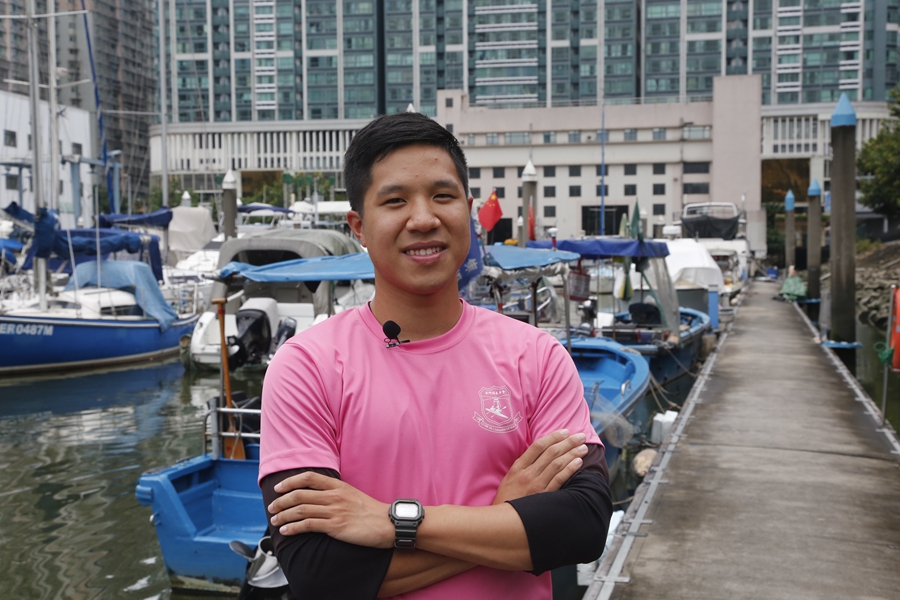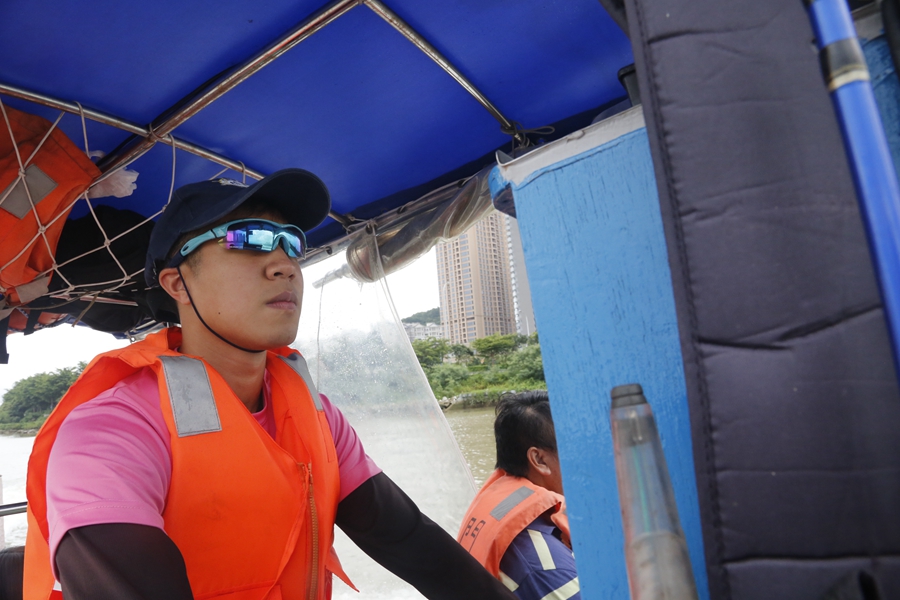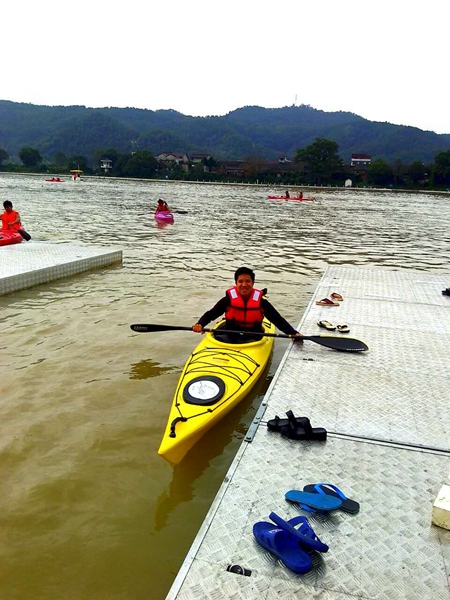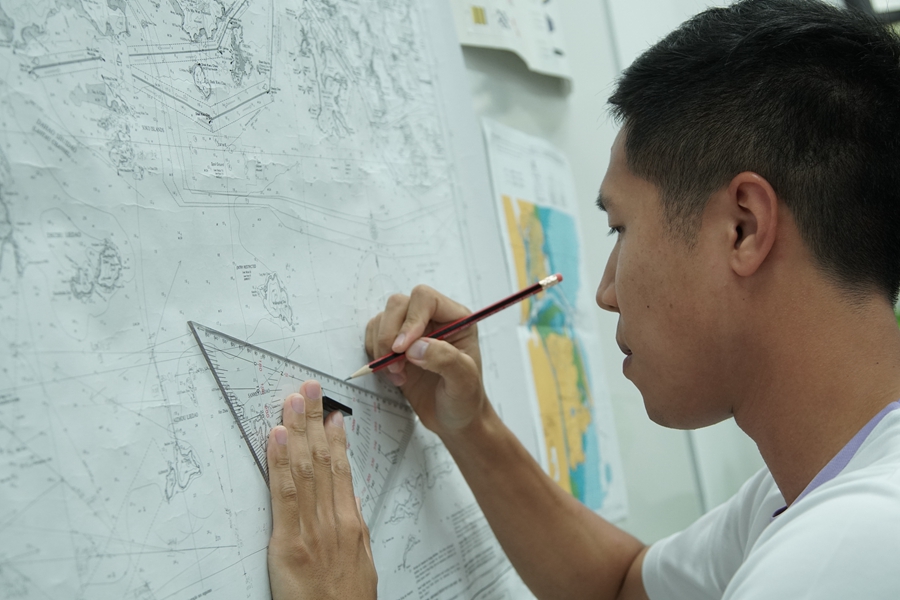The Most Difficult Part—Nautical Charts and Berthing
While studying for the captain’s license, Chan received guidance and help from many maritime professionals. His most unforgettable memory is that of learning to draw nautical charts. He had to learn how to measure angles and how to do dead reckoning, which were not easy. With the help of senior students and repeated practice, he gradually learned more about vessel planning, positioning, and safety tips. The GPS system sometimes malfunctions, so it is important to make a passage plan. With a passage plan, even if the GPS system malfunctions, the crew can still complete the rest of the voyage by relying on such instruments as the magnetic compass, the dumb compass, and the sextant, as well as the data obtained from the passage planning.
It is also important to prepare for contingencies at sea. Unlike a car, a ship doesn’t have a break, so the crew need to be mentally prepared for all possible contingencies at sea. For example, when an obstacle is detected, the crew must slow down the ship or change the direction. At night, when nothing is visible, the crew must pay attention to signals from other ships, such as sirens and lights, to determine the location of the ship.
Apart from dealing with contingencies, berthing is also a difficult part of the job, which Chan finds the most challenging. The choice of the berthing approach depends on various factors, including weather and water conditions. Even now, Chan still needs to practice berthing skills.‘There is no shortcut. I just have to practice more, drive slowly, stay alert to the surroundings, and make adjustments accordingly,’ he says.
Cherishing Time with Parents
Chan originally planned to go to Taiwan for college to study sailing. He even received an offer from a Taiwan college. But his mother hoped he could stay. Not sure how to decide, Chan remembered a piece of advice from a ship captain, ‘Marine perils are unpredictable. Once you enter this profession, there is a chance that you might not return from your job. So you might as well spend more time with your family while you still can.’ So Chan followed his mother’s suggestion and stayed in Macao for college. ‘I hope to spend more time with my family and take care of them when I still have the time and ability,’ he says. ‘I don’t want to regret when it’s too late that I didn’t cherish the time with my parents.’
Worth the Hard Work
Chan once took short-term courses at Dalian Maritime University and Dalian Ocean University. These courses made him realise that sailing rules and regulations vary from place to place. ‘No university in Macao offers programmes in sailing. So if you want to become a ship captain in Macao, it takes a long process,’ he says. ‘First you need to obtain a sailor’s license, then you need to obtain a near coastal captain’s license, and only after that can you try to apply for an ocean captains’ license. These exams require different types of knowledge.’ Apart from attending classes at UM during the day and taking sailing courses at night, Chan is also a member of the Macao Canoeing Team which requires weekly training. ‘Sometimes to prepare for major competitions, we have to undergo additional training,’ he says. ‘Of course it’s tiring, but I am working towards my goal, so it’s worth all the hard work.’ Chan feels sailing helps him become calmer and more observant. More importantly, it trains him to think on his feet. His background in sociology teaches him to analyse problems from different angles. ‘For example, in case of an accident at sea, I need to quickly identify the cause of the problem and think of ways to remedy the situation,’ he says.
Protecting Our Harbour
Becoming a ship captain is a goal Chan set seven years ago. He is very grateful to the maritime professionals who have provided guidance and help to him along the way. ‘Today, very few people are willing to work on a ship, because they think it’s boring,’ he says. ‘In the old days, each voyage took at least one or two weeks. Now even with the increased speed, still very few people are willing to enter this profession. So those who have helped me all hope that I could see things through.’
Chan loves working at sea. ‘Compared to working in an office, working at sea is more fun, more liberating, and more relaxing,’ he says. ‘I really hope to enter this profession. I also hope more and more young people will join me so we can protect our harbor together.’
How to obtain a captain’s license?
Step 1, Obtain a sailor’s license, which allows the license holder to drive a C2-class ship
or a ship of a lower class 3nm to 5nm offshore during the daytime.
Step 2, Obtain a near coastal captain’s license, which allows the
license holder to travel 25 to 30nm of fshore.
Step 3, Obtain an ocean captain’s license, which allows the license
holder to drive a ship anywhere in the world.

43317-78995

Chan Kit Fong hopes more people will join the seafaring career

Chan Kit Fong placed second in the men’s 200-metre individual category and third in the men’s 500-metre individual category at an inter-varsity canoe competition in 2015

Chan Kit Fong thinks drawing nautical charts is not easy

Chan Kit Fong cherishes every opportunity to be with his parents. He travels with his parents every summer holiday.
